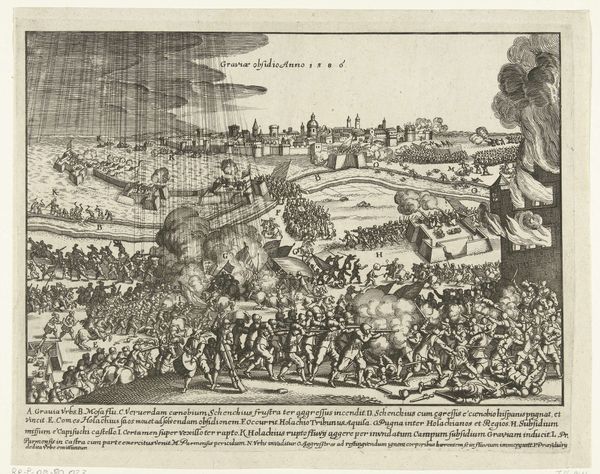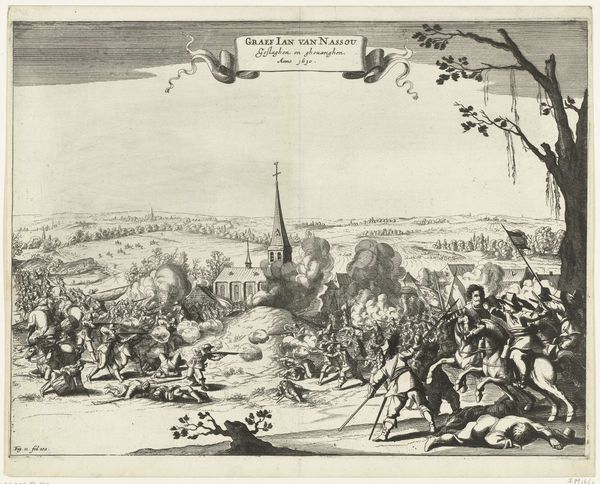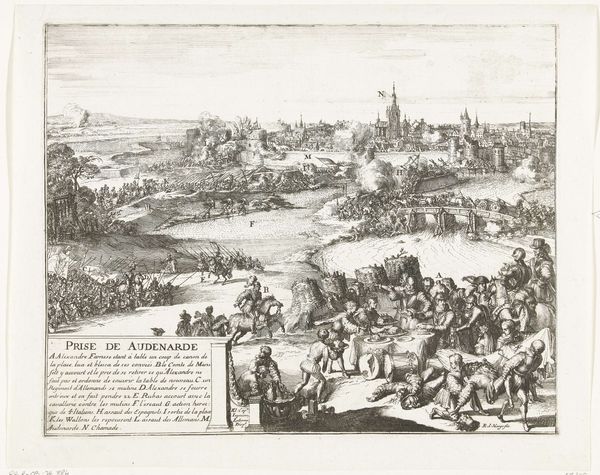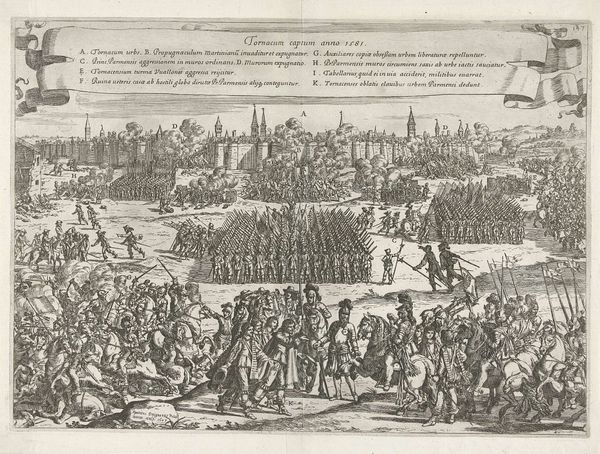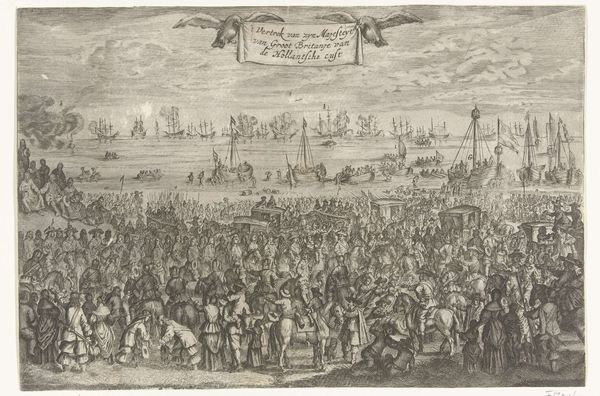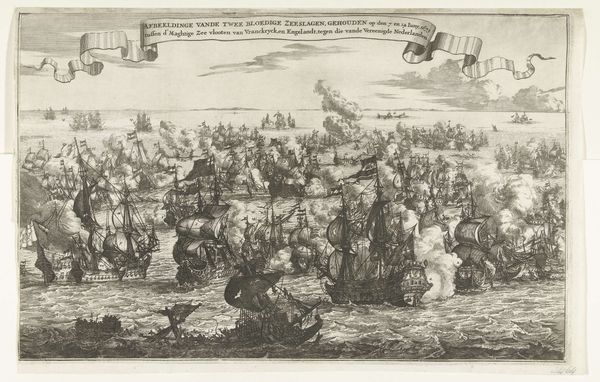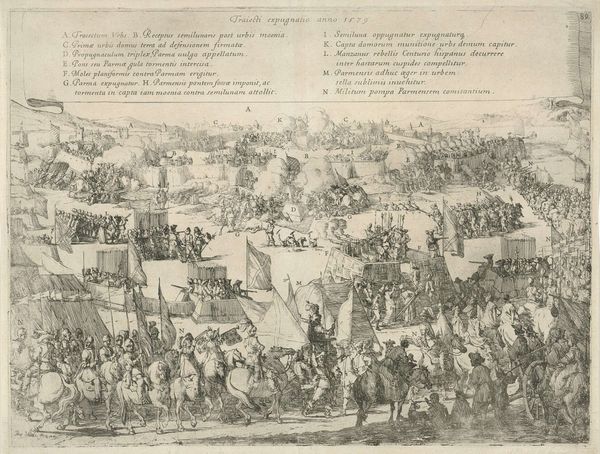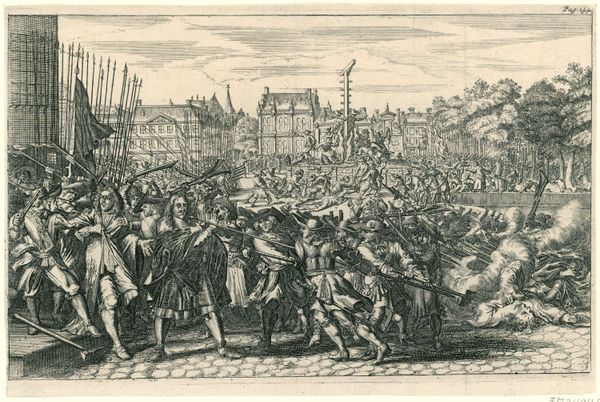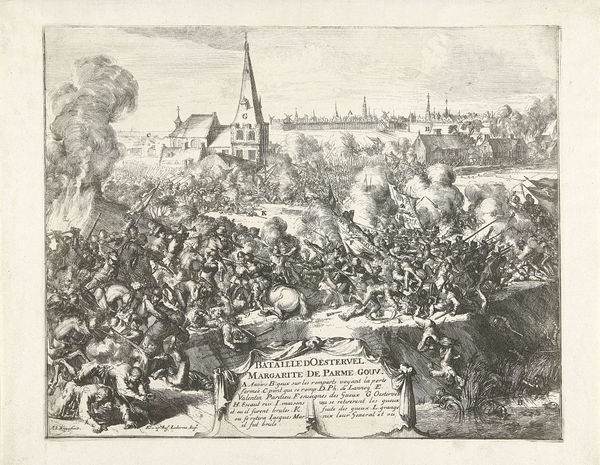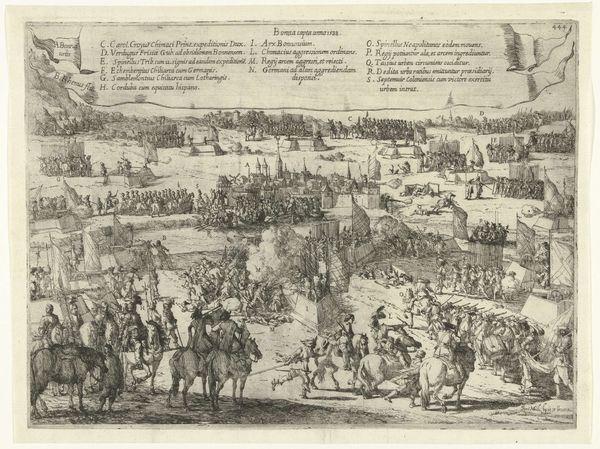
print, etching, engraving
#
baroque
#
dutch-golden-age
# print
#
etching
#
cityscape
#
history-painting
#
engraving
Dimensions: height 190 mm, width 260 mm
Copyright: Rijks Museum: Open Domain
Curator: Look at this print, titled "Uittocht van het Franse leger uit Utrecht, 1673" ("Departure of the French Army from Utrecht, 1673"). It's an etching and engraving by Romeyn de Hooghe. Editor: It's incredibly detailed. The density of figures makes the retreat look less like an orderly withdrawal and more like a panicked mob. I wonder what materials beyond the etching process are conveying such rich layers of storytelling here. Curator: Absolutely, the artist utilizes line work to emphasize this point. It represents a key moment during the Franco-Dutch War. The French occupation of Utrecht was deeply unpopular. De Hooghe capitalizes on the event to bolster Dutch morale, reflecting on this political narrative. Editor: I find myself pondering over the economic underpinnings here; paper production, engraving tools, the printing press itself – these represent labor and resource investments deployed to sway public sentiment and manufacture collective identity in the process. Were such works intended as collectibles, circulated like pamphlets, or even plastered across walls? Curator: These prints circulated widely. They shaped public opinion and were part of broader propaganda efforts against Louis XIV's expansionist policies, as an assertion of Dutch national identity, designed for quick distribution and impact, so accessibility was key. Editor: So, an investment in material culture fueling nationalist fervor! One cannot simply divorce its artisanal nature from its political agenda. It's as much a handcrafted object of manipulation as it is fine art. Curator: Exactly! And De Hooghe was highly skilled. He understood how images could be powerful tools in shaping perceptions. Think of it as a seventeenth-century version of viral content; it became a widely distributed image which promoted discourse and created the emotional drive for people to join political debates. Editor: Makes me think about how mass-produced visual culture and technological developments continually redefined the public role and function of art, something that endures even now. Curator: Agreed, seeing the past as something material to engage and dissect— it’s enriching. Editor: Yes, seeing the political dimension as a production material is definitely worth investigating!
Comments
No comments
Be the first to comment and join the conversation on the ultimate creative platform.

